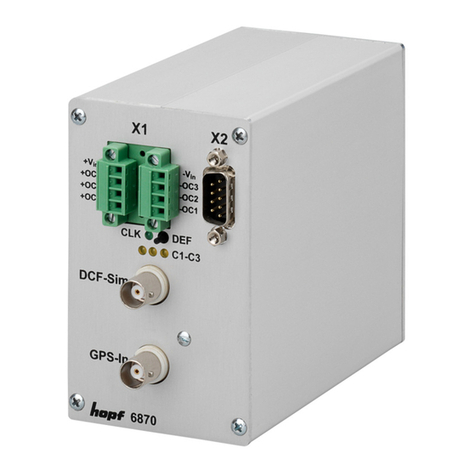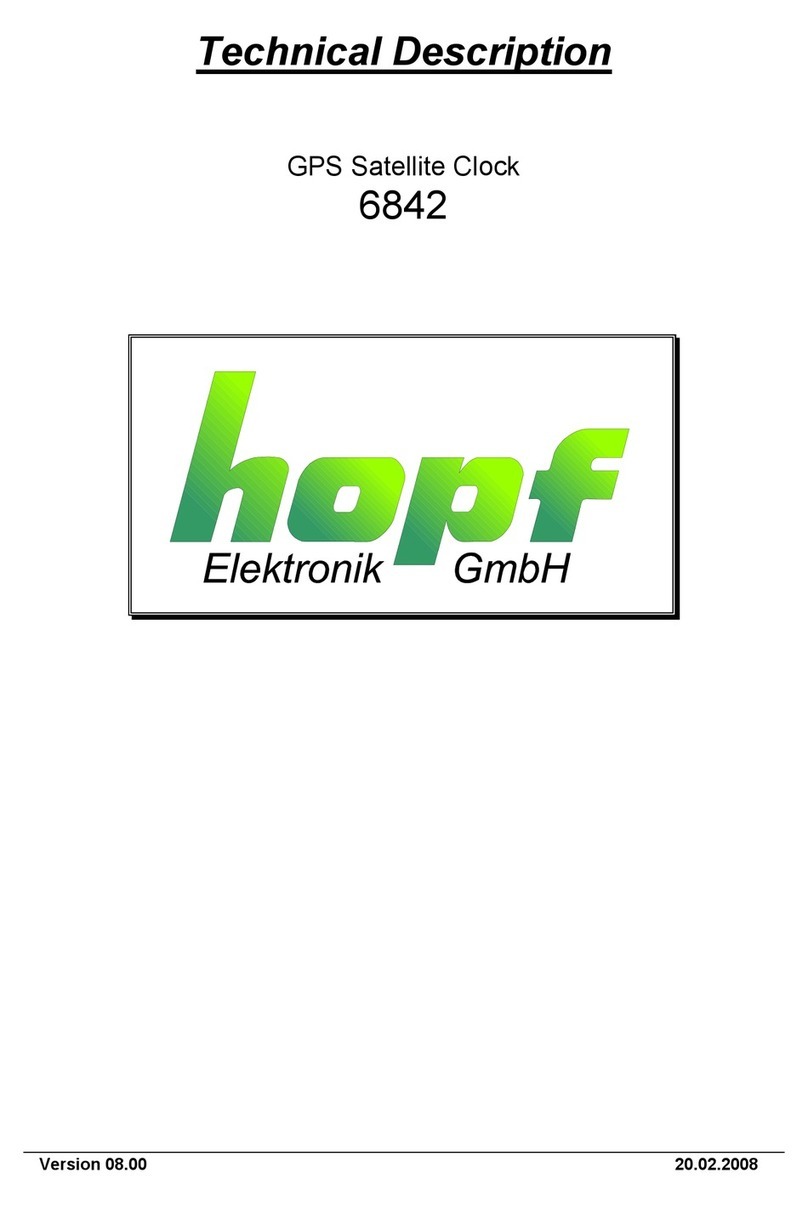
GPS PC-board 6038 hopfhopf Elektronik
version 03.01 page 9
Supervising the reception quality
Structure of display mode 2 from main menu 4
base address = Hex : 0280 milliseconds : 293
----------------------------------------------------------------------
zone hour minute second day of week day month year
----------------------------------------------------------------------
ST/WT 15 5 41 1 1 4 96
----------------------------------------------------------------------
data of position: latitude : +51.16587 longitude: -7.3456
difference time UTC/Local: +01 hour 00 minutes
Max Sat.: 7 Revision number : 1.1 date : 01.04.96
Sat.-No.: S/N: 05/137 17/043 15/080 25/065 32/090 00/000
----------------------------------------------------------------------
Status information of the Transmission
B7 B6 B5 B4 B3 B2 B1 B0
1 1 0 0 1 0 0 0
radio time leap second. ST DST ann free free
----------------------------------------------------------------------
key word = 21845 reception for 10 minutes
----------------------------------------------------------------------
end by pressing key ..
----------------------------------------------------------------------
In the setting 3D of the time evaluation 4 satellites within the view of the antenna are required to
synchronise the system with the time. At best 9-10 satellites are within the view of the antenna,
while 6 satellites can be received parallel. Mode 2 menu item 4 allow control of the number of
satellites within the view and which satellites can be received, also a relative measure of the re-
ception power is transmitted.
The time evaluation can also be done in the position fixed mode which requires only one satellite
for synchronisation (see chapter 0).
The entry "Max Sat." states the number of visible satellites. Six satellites can be received. The
entry "Sat.:No/S-N" states the satellite-pseudo-random-number.
The satellites are not numbered 1, 2, 3, etc. but named after the pseudo-random-number of the
satellite broadcasting its information. In case of a satellite failure a spare satellite can be acti-
vated under the same number. The figure after the slash indicates the signal/noise ratio. It can
vary between 0-255.
After the first installation it may take up to 4 hours before satellite data are at hand. It depends
on the start information received by the system (see programming time, position etc.) and on the
antenna position e.g. half the view range to the sky.
In the above screen there are 7 satellites in the theoretical view range, of which e.g. satellite 05
is received by the GPS-receiver with a relative signal/noise ratio of 137 and satellite 17 with 43.
The values of a bad signal/noise ratio lie within 10-30
The values of a sufficient signal/noise ratio lie within 30-70
The values of a good signal/noise ratio lie within 70 and higher
































